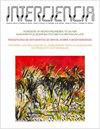调节与控制模型的各种应用(通过经济学模型接近建议的领域)
IF 0.4
4区 综合性期刊
Q4 ECOLOGY
引用次数: 0
摘要
本研究提出并讨论了一个基于托管与控制的知识生产与真理发现模型。该模型表明,知识生产方式有两种类型。第一种方法是通过研究现象来控制现象,通过了解现象的最初根源,或者研究称之为自下而上的方法。第二种方法是了解现象的最大范围或其最终路径的方法,这就是研究中所谓的从上到下的方法。第一种方法是主导方法,第二种方法是建议方法。该研究强调了所提议的方法在精确科学、社会科学、历史、艺术、身份等领域的若干应用。研究的最终结果是,产生知识的不同方式导致相同的真理,但不同的是现象的模式或支配现象的特殊规律本文章由计算机程序翻译,如有差异,请以英文原文为准。
Miscellaneous applications to the accommodation versus control model (Approaching Suggested fields via economics Model)
The study proposes and discusses a model for knowledge production and truth discovery under the rubric of hosting versus control. The proposed model shows that there are two types of knowledge production methods. The first method is to control the phenomenon by studying it by knowing the initial root of the phenomenon or what the study calls a bottom-up method. The second method is the method of knowing the maximum extent of the phenomenon or its final path, which is what the study calls the method from top to bottom. The first method is the dominant method, while the second method is the suggested method. The study highlighted several applications of the proposed method in the fields of exact sciences, social sciences, history, arts, identity and the like. The final result of the study is that the different ways of producing knowledge lead to the same truth, but the difference is in the mode of the phenomenon or the special law that governs the phenomenon
求助全文
通过发布文献求助,成功后即可免费获取论文全文。
去求助
来源期刊

Interciencia
综合性期刊-生态学
CiteScore
0.80
自引率
25.00%
发文量
1
审稿时长
4-8 weeks
期刊介绍:
Interciencia is the monthly multidisciplinary publication of the INTERCIENCIA Association. It is dedicated to stimulate scientific research, its humanitarian use and the study of its social context, specially in Latin America and the Caribbean and to promote communication between the scientific and technological communities of the Americas.
Interciencia has been published uninterruptedly since 1976. Its Founding Director, Marcel Roche (endocrinologist and sociologist of science) was editor until 2008, and thereafter Miguel Laufer (neurobiologist) has been in charge. It has been included since 1978 in the Science Citation Index and other international indexes, and since 2008 it maintains an open access electronic version with material from 2005 onwards.
The priority areas of the journal, without exclusion of other areas, are Agronomy, Arid Lands, Food and Nutrition, Biotechnology, Ecology and Environment, Energy, Innovation and Technology Transfer, Marine Resources, Non-renewable Resources, Science Education, Science Policy, Study and Sociology of Science, and Tropical Forests.
Interciencia publishes in Spanish, Portuguese and English research and review articles, communications and essays, all of which are subjected to peer review. Additionally, it includes non-refereed sections such as Editorial, Letters to the Editor, Open Town Hall, Book Reviews and Upcoming Events.
All the material submitted to the journal for publication and accepted by the Editorial Committee in view of its quality and pertinence is subjected to review by peer specialists in the corresponding fields of knowledge. Neither the INTERCIENCIA Association, nor the journal or the institutions to which the authors belong carry responsibility for the contents. Signing authors are responsible for the material published under their names.
 求助内容:
求助内容: 应助结果提醒方式:
应助结果提醒方式:


